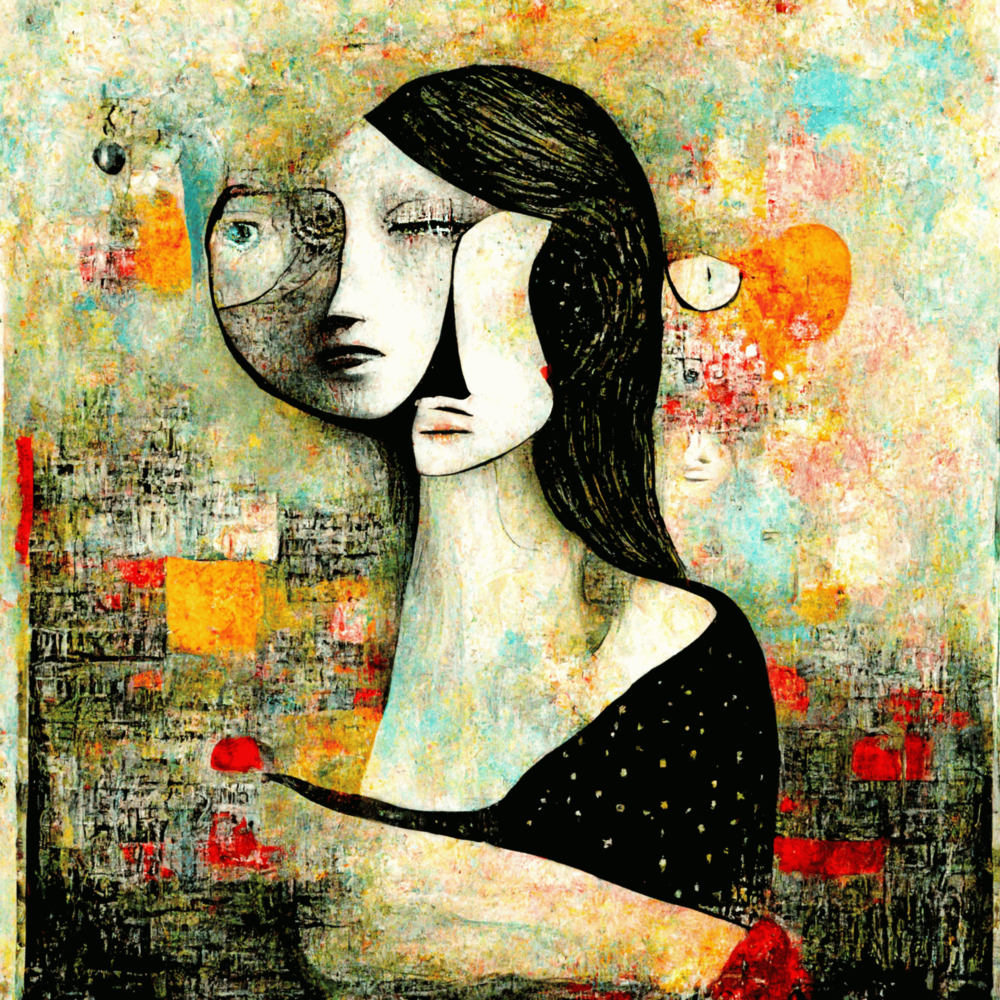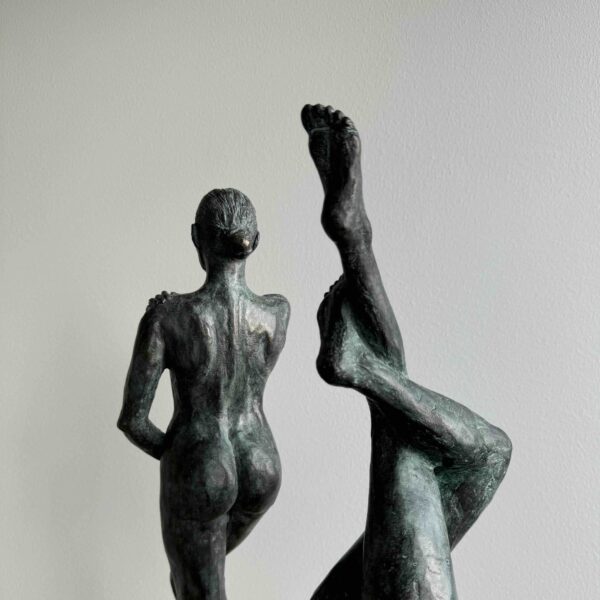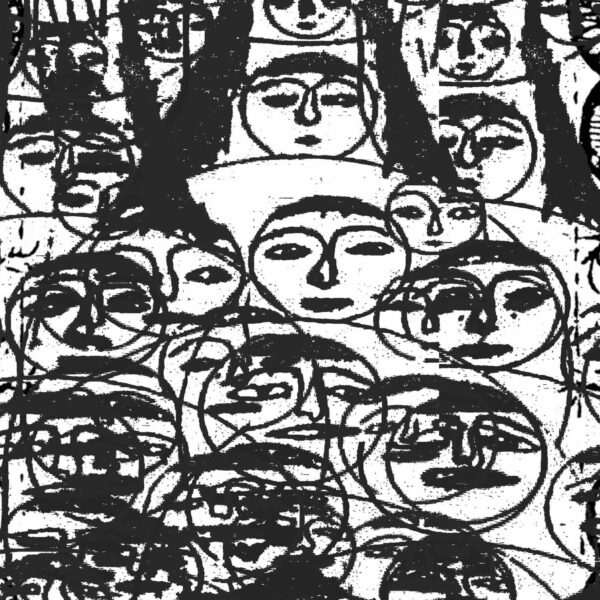Art and Software Run as Parallel Tracks in the Life of Helena Sarin
Helena Sarin is a visual artist and software engineer who has always been working with cutting edge technologies. She started at Bell Labs designing commercial communication systems, and for the last few years has worked as an independent consultant, developing computer vision software using deep learning. But art and software ran as parallel tracks in her life. All of her art was analog, until she discovered GANs (Generative Adversarial Networks). Since then, generative models became her primary medium. In this interview, we dive into training algorithms, pottery GAN,and the trials of publishing physical books in a digital age. Please note, this conversation has been edited for brevity and clarity.

Q: Can you tell me about your first memory of getting into the art world?
HELENA: Being brought up in the Far East of Russia, my mom let me do whatever I wanted with scraps of clothing. So, my first artistic thing was knitting and needlework. I was not a very good draftsman or painter or anything, but I took some lessons. Mostly the stuff I was interested in was on the applied arts side.
Q: Walk me through your evolution. You studied computer science, had a stint in Tel Aviv, and ended up in the US. What was that evolution?
HELENA: From the timeline perspective, I left parent’s home at sixteen. I went to study Civil Engineering at a University in Moscow. I got married, and we actually stayed in Moscow for a while and then we left for Israel. We were in Israel for six years and then moved to the United States. In parallel, from the art perspective, I started working after college as a software developer, and then found that the more lucrative business was in fashion. I started working in fashion design and selling my knitwear as bespoke pieces for artists. Then, when we got to Israel, there was no work. I was thinking I would do needlework again and create really high end fashion pieces because there were a lot of boutiques, but I discovered they really were sweatshops. Then, when this boom in the tech industry started, I started working in Israel again in high tech, in telecom. I was a really hardcore engineer and was hired by Bell Labs basically over the phone. So when I came to the US in 1996, I already had a job.
So I actually made several attempts at trying to do generative art, but was left in the cold.
Q: Can you tell me how you think about the physical art world versus the very digital world of AI and NFTs?
HELENA: For me, there is no problem combining these two worlds or having them as parallel parts in my life. AI and living inside digital arts feels natural, because I’m very enthusiastic about software. I took two workshops with Casey Reas, who invented the Processing language. So I actually made several attempts at trying to do generative art, but was left in the cold. When I started doing NFTs, I was doing prints, fine art prints. So what I did for my first mint was I basically minted my GAN/AI works. I still mentally was thinking about this NFT thing as prints. NFT for me was something separate from digital art, honestly.
Q: Let’s talk about your actual art itself. So if someone, a new collector, isn’t that familiar, what is the process of creating one of your pieces?
HELENA: It’s all over the place. Up until this text-to-image came into the picture, the process was more or less that I had models, tons of models, trained on my art and food photography. The first period was just conversion from real to artificial. For example, when I took a bunch of foliage leaves images, I trained the network, and I started doing the Leaves of Manifold. That’s pretty straightforward. It’s time consuming, but it’s pretty straightforward.
Q: Tell me about your published books. How did that begin?
HELENA: The Book of veGAN started because I took a bunch of pretty looking salad leaves and trained the network on them. The generated leaves were really beautiful. Still not surreal, but different. The models that I was working with were on a smaller scale, though the AI research progressed, the networks became bigger. And they would be doing the reality stuff which is quite boring. I always say that when AI gets closer to reality, I make my artistic pipelines longer. Also at the time I came up with this postGANnism style, with doing post-processing and generative art. That’s what is in my latest book, The Book of veGAN, which is images as well as recipes somebody wrote for me. Though it’s eclectic in a sense, you could always know that’s coming from Neural Bricolage.
With all my three books, I did it myself, and I learned a lot. Every time I open them, I’m feeling like, "wow." I want to convey this “wow” to people, but it's hard.
Q: Why are those books so important to you? Is it the time and effort that went into them?
HELENA: They’re important to me because they’re beautiful. Forget about the time I invested. I had a lot of fun designing it. With all my three books, I did it myself, and I learned a lot. Every time I open them, I’m feeling like, “wow.” I want to convey this “wow” to people, but it’s hard. Then again, it’s funny, I mean people don’t hesitate to spend thousands on NFTs. My drop on Foundation was sold out immediately, but I have problems with selling to pretty much the same group of people, a physical thing for $150. So it’s paradoxical, but that’s what it is.
Q: Do you think you have a most important work?
HELENA: No. That’s funny because first of all, different collectors like different things. I myself like stuff that typically others do not. I feel really proud of all my books, I still have a really hard time selling them because my main audience is NFT collectors, here I am with a cookbook.
Q: When it comes to your art, a lot of that art was created over multiple years prior to you getting into the GAN world. Do you now create different themes and then train an algorithm on it?
HELENA: Not really. I have so many models that are already trained. They already know my style, in a sense. I do that if I do a new analog art piece, like a new drawing, I just pass it through this pipeline. So sometimes I fine-tune, when it’s a situation where you can take an existing model and fine-tune it on new material.
Q: Nowadays, in terms of where your head is, is it more on creating new material to train, or is it more on creating the models?
HELENA: It’s more on figuring out what the next step is. I need to decide for myself where I want to be tomorrow, or even right now. I’m currently preoccupied with this analog stuff, which is pottery GAN, which is basically taking these digital AI designs and making them into real physical artifacts. I would say it is still in development because honestly, it’s even harder to make a living from pottery than it is from books. So I definitely want to do this, but it’s just part-time, while I’m thinking about what the next step is with NFTs and things. It’s definitely still AI, and in a broader scheme of things, it is more like computational art. I always move on when things become boring.
Q: Do you have a view in terms of how AI changes the world that we live in?
HELENA: It already has changed it a lot, with fake news and whatever. But in terms of art, it’s definitely a new world. So for me, it’s something that I can use to jump start whatever I do. I collage, so sometimes I’m blending and mixing everything together and then I put some scripting over it. It’s very convoluted, but it’s fun.
You need to find your tribe and stick with it.
Q: Is there advice that you would give to people who are trying to become full-time artists, or artists who are trying to find their way in the crypto world?
HELENA: You already know this boring advice, but I always say don’t leave your day job. Everything really comes down to being in the right place at the right time. Sure, people will like to attribute their success to themselves, and there is a lot of that. A lot of hard work, a lot of, I don’t know, talent, but perseverance as well. You need to find your tribe and stick with it. We have this with AI, it turned into crypto, but it still is a group of people who essentially support each other.


